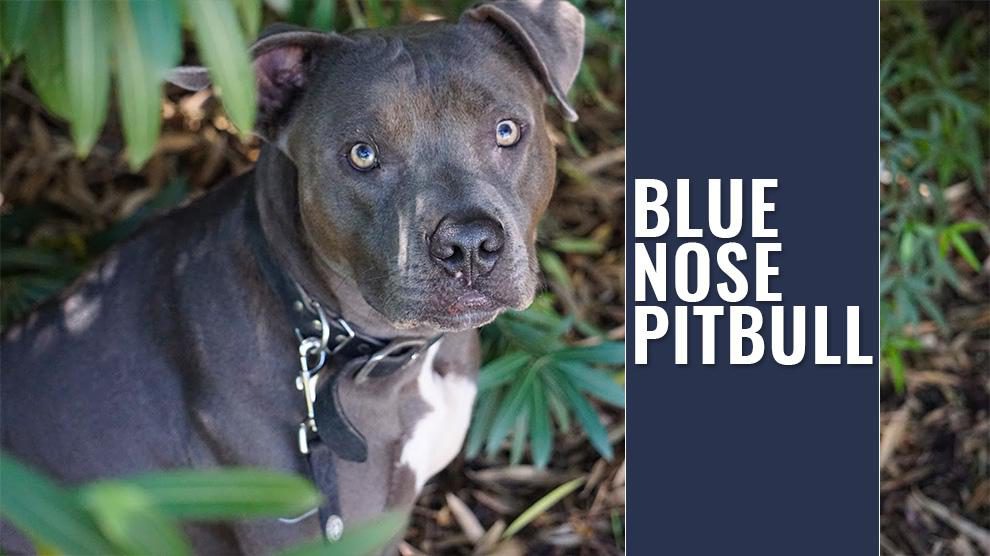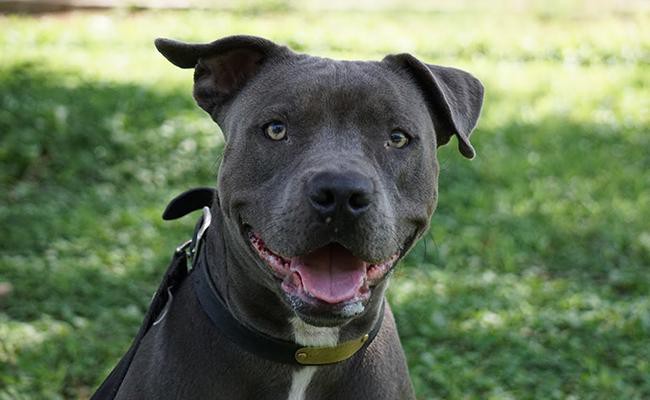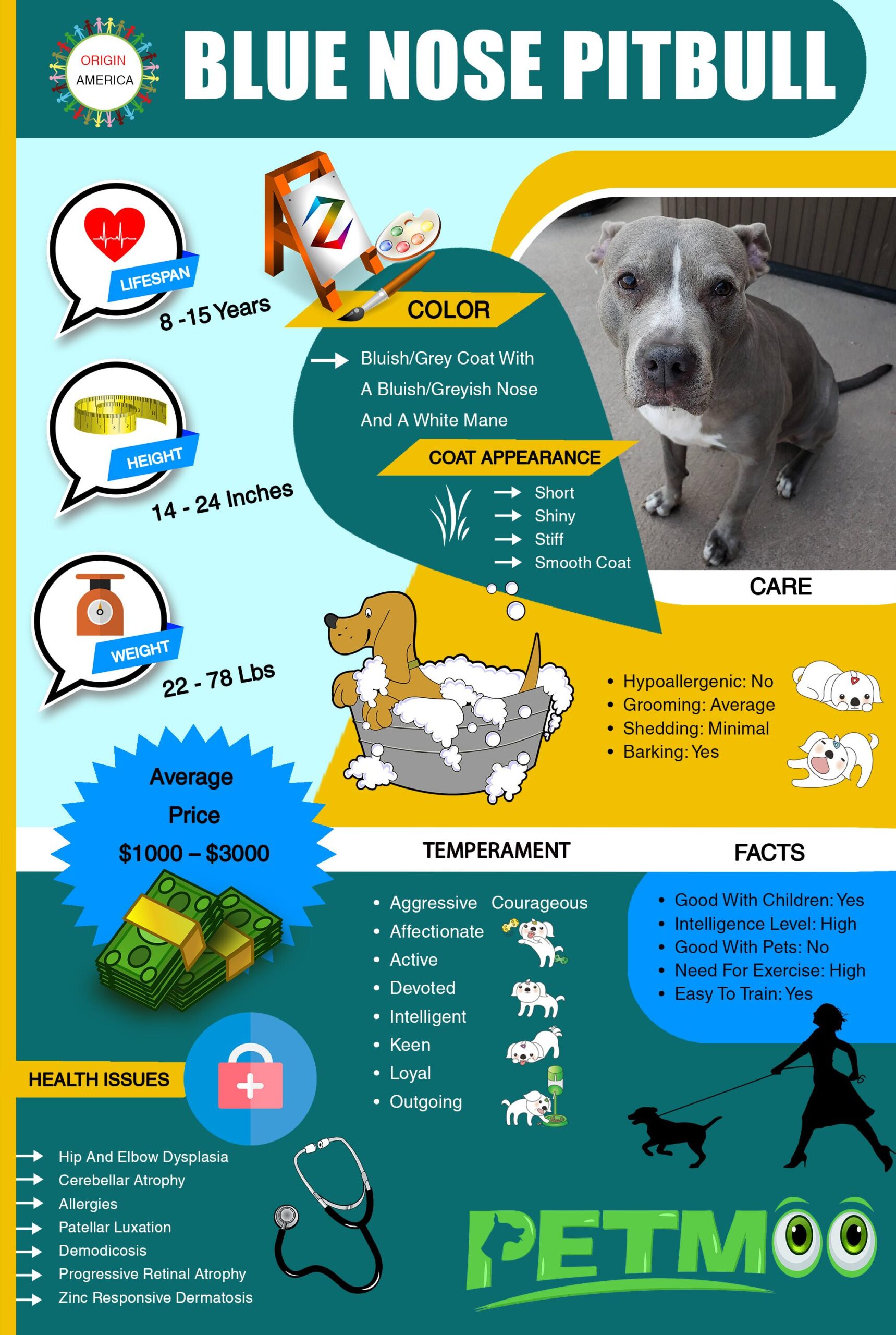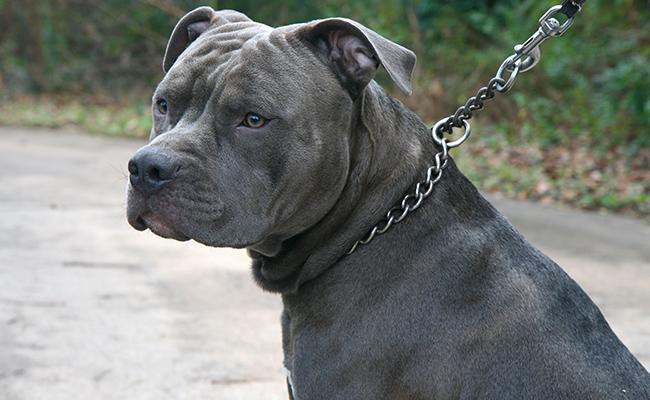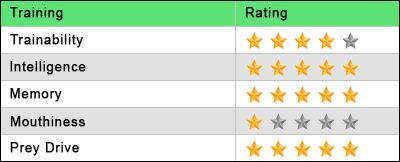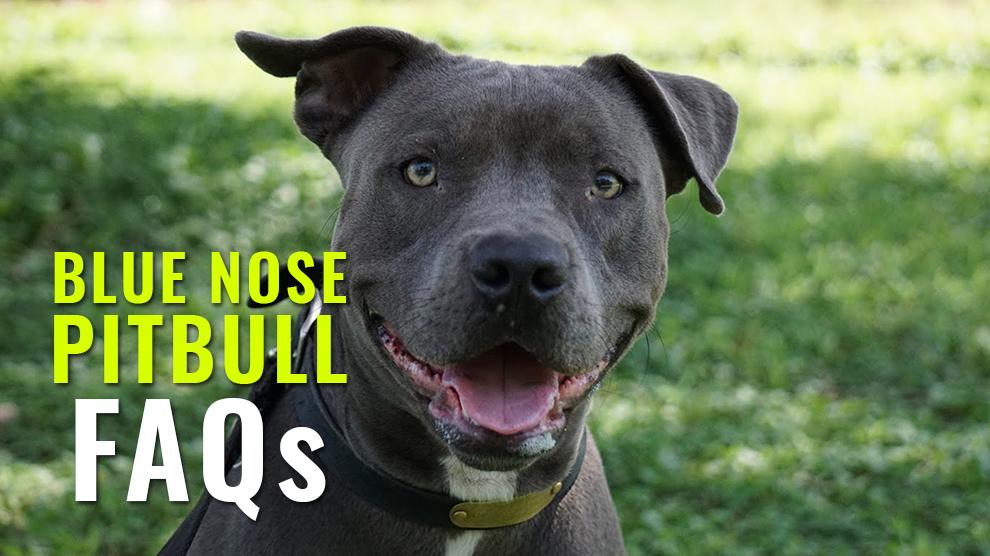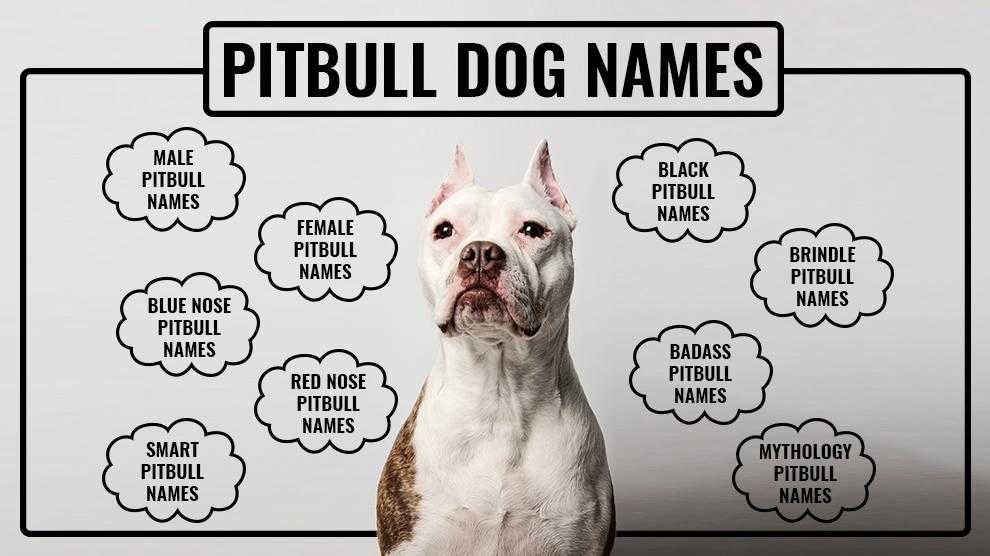Dog Pregnancy Calculator And Timeline
The blue nose pitbull is one of the most tolerant and dutiful dog breeds you will ever come across. They are the sweetest little goofballs and possibly the friendliest of the Pitbull clan to own.
The confusion, stigma, and tales circling the Blue Nose Pitbull, and Pitbulls, in general, are always in the air. They are often misinterpreted as dangerous dogs, but it’s time to turn the tables.
Breeders are breeding more Blue Nose Pitbulls than ever to an advantage of the “blue lust” amongst dog lovers and cynophilist’s.
The defining trait of a Blue Nose Pitbull is an uncommon blue-gray color of the skin, nose, and toenails. To elevate your excitement, there are Red Nose Pitbulls also.
In no doubt, an individual Blue Nose or Red Nose Pitbull might be extra-special to its holder, but overall, a Blue Nose Pitbull is just a Pitbull in a fancy dress competition.
Here is your chance to turn into an unofficial Pitbull breed ambassador… Once you’ve got Pitbulls, you can’t resist trying to convince others about how wonderful they really are.
Nothing will make you happier than someone saying to you, “I had no idea Pitbulls were this sweet”, once they meet your dog.
In this article, you will find 13 interesting Blue Nose Pitbull Dog Breed facts.
Blue Nose Pitbull Breed Info
- Origin: America
- Size: Medium
- Dog Breed Group: Terrier
- Purebred: No
- Lifespan: 8-15 Years
- Height: 14 – 24 Inches (35 – 60 Cm)
- Weight: 22 – 78 Pounds (10 – 35 Kg)
- Coat Appearance: Short, Shiny, Stiff, And Smooth Coat
- Coat Colors: Bluish/Grey Coat With A Bluish/Greyish Nose And A White Mane
- Temperament: Affectionate, Active, Aggressive Courageous, Devoted, Intelligent, Keen, Loyal, Outgoing
- Good With Children: Yes
- Intelligence Level: High
- Good With Pets: No
- Hypoallergenic: No
- Grooming: Average
- Shedding: Minimal
- Barking: Yes
- Suitable For Apartments: Yes
- Need For Exercise: High
- Easy To Train: Yes
- Good For First Time Owners: Yes
- Health Issues: Hip And Elbow Dysplasia, Cerebellar Atrophy, Allergies, Patellar Luxation, Demodicosis, Progressive Retinal Atrophy, Zinc Responsive Dermatosis
- Litter Size: 2-5 Puppies
- Average Price: $1000 – $3000
Blue Nose Pitbull History
Bear in mind that there is so much confusion these days about the Pitbulls. Most people generously use the term “Pitbull” for any dog that has the physical traits of a Pitbull (like a square-shaped head and bulky body).
This leads to a lot of mix-ups and confusion, and unfortunately, it has even led to people losing their much-loved pets due to breed-specific legislation and misidentification which targets “types” of dogs.
What is a Blue Nose Pitbull bloodline?
The name of dog breeds in a Pitbull breeds list is a confusing one. In fact, the only dog breed with the words “pit bull” in the name is the American Pit Bull Terrier (ABPT) descended from the Molosser dog.
But 3 other dog breeds are commonly referred to as pit bulls – The Staffordshire bull terrier, the American Staffordshire terrier, and even the American Bulldog.
The American Dog Breeders Association (ADBA) states that the striking blue or red coloring occurs when two parents with homozygous recessive blue coat-color genes are bred, which doesn’t often occur naturally.
The blue color associated with the Pitbulls blue nose is a recessive trait and, in fact, an anomaly of diluted black pigmentation. As so many people fancy unique Pitbull coloring, breeders force recessive-gene Pitbulls to breed together. If this sounds a little hazy, it would.
Here comes an even more confusing part. In spite of the term Blue Nose Pitbulls, some of these dogs don’t have a blue nose. Sometimes the dog can have a blue or an incomplete blue nose.
Even Blue Nose Pit Bull kennels are susceptible to producing puppies that don’t have a blue nose. Although they don’t have a blue nose, they are still considered Blue Nose Pitbulls because of their genetic makeup.
Is Blue Nose Pitbull The Right Dog For You?
A Blue Nose Pitbull may be right for you, if you want a dog who:
- Is powerful and muscular, built rather like a Mack truck
- Looks serious and imposing, so makes an effective deterrent
- Thrives on vigorous athletic activities
- Has an easy grooming requirement, easy-to-groom coat
- Isn’t overly dependent or clingy
A Blue Nose Pitbull may not be right for you, if you don’t want to deal with:
- An extremely careful search to make sure you’re acquiring an even-tempered dog
- Boisterousness, exuberant jumping, and Destructiveness when bored
- Aggression toward other animals
- Strong-willed mind of his own ( which requires a confident owner)
- Legal liabilities, insurance problems, increased the chance of lawsuits and rights
What Does A Blue Nose Pitbull Look Like?
Short, shiny, and smooth to the touch. Long or curly or wavy coats are disqualifying faults. Their noses should match their coat color.
Blue Nose Pit Bulls have a coat that includes shades of blue, grey, white mane, and a matching blue or grey nose!
Blue Nose Pitbulls White
The striking blue color may have white patches due to the different recessive coloring gene makeup. When there’s decreased presence and production of melanin, which determines the pale grayish hue that may be correlated with the rare white color. They call the coat color a white mane.
Blue Nose Pitbull Appearance
The Bluenose Pit Bull Terrier is a little more muscular than the regular American Pit Bull Terrier (APBT). They are of medium size, agile with well-defined musculature, and should be “square” when viewed from the side with a solid front end with a light and springy back end.
They have a muscular body and well laid back shoulders with long and wide shoulder blades.
Blue Nose Pitbull Care
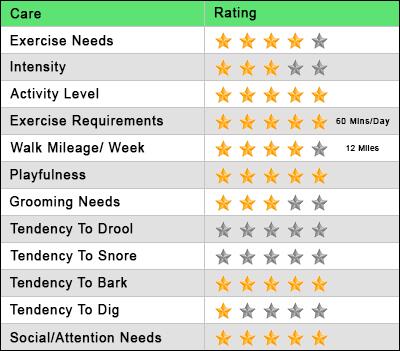
What about the first-time owners?
Say goodbye to the couch once you have a blue pit puppy. In general, Blue pits are quite a good choice for first-time dog owners as long as you get them when they are 4 to 8 weeks old.
They love to please their owners more than anything else and are also easily trainable.
You may like to read: 8 Point Puppy Proofing Checklist
Blue Nose Pitbull Temperament
Contrary to the popular belief, they are gentle giants and have a heart of a Golden Retriever and are respectful, or at least refined, with family and strangers alike.
Blue Nose Pitbull Aggression
Hang on. Their attitude toward other canines and animals are a different story altogether.
Their dog-fighting ancestry dictates a refractory, intransigent, no-nonsense kind of dog who does not take benevolently to being challenged by other assertive dogs.
In the Pitbull world, there is never a ‘NO’ for a confrontation with other animals.
Blue Nose Pitbull Personality
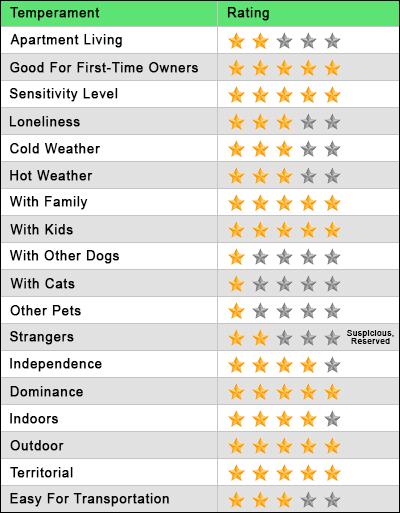
Adaptability
- Apartment Living – Low To Moderate
- Good For First-Time Owners – Yes
- Sensitivity Level – High
- Loneliness – Averagely Suited To Be Alone
- Cold Weather – Average
- Hot Weather – Average
Friendliness
- With Family – High
- Kids – High
- Other Dogs – Low
- Cats – Low
- Other Pets – Low
- Strangers – Suspicious, Reserved
General Behavior
- Independence – Fairly Independent
- Dominance – High
- Combativeness – Aggressive
- Indoors – Active
- Outdoor – Highly Active
- Territorial – Yes
- Easy Of Transportation – Medium
Can Blue Nose Pitbulls be good family dogs?
They are actually quite playful and pleasant. The breed’s natural aggressive tendencies are mainly towards other unfamiliar animals or pets. However, proper training and socialization methods will make them non-aggressive and adorable pets.
The American Bluenose Pitbull is often misunderstood having received a bad rap over the years for aggressive behavior towards people.
However, The American Temperament Test Society, which has conducted a ten-step exam for temperament testing found that the Pitbulls (that includes blue nose pit bulls as well) were one of the most tolerant breeds.
Are Blue Nose Pitbulls good dogs?
They have a broad spectrum of humanlike emotions that make these dogs relatable to us. They just love their pack, meaning family.
They serve their homes fervently as they so effortlessly get attached to a family which in no time is evident with the protective behavior and affection they have towards them.
Sure this dog looks vicious and violent, but beneath that rough exterior is a different kind of dog. Do you believe that Blue Nose Pitbulls are affectionate to kids?
Yes, they do. Also, this dog has a high tolerance to pain when kids may unknowingly harm them.
They tend to be selective with their friends and choose their relationships carefully! Bluey’s may have a hard time opening up to others.
So be patient with them and allow them to reveal themselves to you slowly. Keep in mind, whatever the nose color; pit bulls take their relationships seriously.
Still, tempted? Let’s explore further what it takes to take care of this dog on a daily basis.
How to Train A Blue Nose Pitbull?
Pit Bulls can be awfully unpredictable, in large part due to the large variety of breeds that may be involved; this is less true of a well-bred pure APBT due to the spotlight on a more passive and compliant temperament by responsible breeders.
Proper socialization and Obedience training are essential components for this dominant breed so as to help prevent apprehensive tendencies, aggressive behaviors towards other dogs, and dangerously overzealous greetings. Pitbulls and pit-mixes may look daunting and vicious; In fact, anybody who’s ever owned a pet knows that they are usually little bundles of face-licking, tail-wagging love.
Blue Nose Pitbull Training Tips
When raised properly, in a loving environment, they are among the friendliest dogs you could want. Though, they are typically very protective of their family and home, and will gladly put on a ferocious display for prowlers who come too close.
Blue pits are not one of the easier breeds to train; they need firm, consistent, regular, and respectful training socialization from an early age.
Remember the term ‘respectful’, being tough is how they get to where they are now. They see the value in it and they keep challenging themselves to higher standards.
So be respectful in your training methods. As he is an intense dog and head-strong, he needs a determined and consistent trainer/ owner. If he is not trained by the book, owners may find it quite hard to handle him as he gets older.
You may like to read: Agility Training For Canines
Blue Nose Pitbull Food
Tips for feeding Blue Nose Pitbull
Daily Food Consumption – Approximately 600 – 1,400 calories per day (i.e., 20 calories/ 1 lb of body weight)
Dog’s weight

- 15 kg = 1000 calories (approximate daily calorie intake)
- 20 kg = 1250 calories
- 30 kg = 1500 calories
- Over 35 kg = 1700 calories
Rough Feeding guide for Red Nose Pitbull dog:
General Meal frequency
- First 1-3: three meals per day
- For the rest of their life: two meals per day
- Pups between first 6 weeks – puppy milk replacement formula
- up to the third month – a mix of 75-percent liquid to 25-percent wet or dry puppy food or 2 meals every 24 hour period (300-450g)
- Feed puppies 6 months to 1 year – 2 bowls of puppy-specific food daily (400- 450g)
- When your puppy hits his first birthday, two smaller bowls every 24 hours or getting him a slow-feeding bowl is typically all that’s necessary.
When your puppy is 12 months old they can be fed adult dog food depending on their activity level and food preferences.
- Dogs 25 – 30 kg =400g
- Dogs weighing 30 – 35 kg = 400g to 500g
- Protein content should be anything from 14 to 25%
- Carb content should be 30 to 65%
- Fiber content should be less than 4%
- Fat content should be less than 10%
- Calcium content should be 0.5 – 0.8%
- Phosphorous content should be 0.4 – 0.7%
- Sodium content should be 0.2 – 0.4%
Best food for Blue Nose Pitbull
- Peanut butter
- Chicken – Cooked chicken meat (yes), cooked bones (no)
- Cottage cheese
- Carrots, apples, sweet potatoes
- Pumpkin
- Yogurt
- Eggs
- Salmon
- Green beans
- Oatmeal
Foods that cause Blue Nose Pitbull food allergies
- Chocolate
- Bacon and fatty meat
- Garlic and onions
- Salty foods (such as popcorn and pretzels)
- Milk, Ice Cream, and Other Dairy Products
- Candy, Gum, and Baked Goods
- Grapes and raisins
- Sugary foods
- Raw fish, liver, and mushrooms
- Coffee, Alcohol
Blue Nose Pitbull Grooming And Shedding
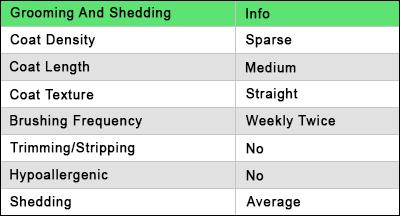
Due to the Bluenose Pitbull’s short and flat hair, grooming it is easy. Daily brushing using a fulminator slicker brush or a rubber curry brush is more than enough to straighten out the coat hair as they shed on an average scale.
It is essential you brush your dog’s coat regularly, most importantly, during season shift periods. Brushing the dog’s fur keeps it healthy, tangle-free, and maintains the natural sheen.
Bath your dog only when it is absolutely needed. Use a dog shampoo that is natural with no pesticides or chemicals but doesn’t use any human shampoo and soaps with alcohol, sulfur, or tar-based.
Make sure to rinse them completely to remove all the shampoo and use a towel to dry off the dog. Make sure that you check the Pitbulls body for signs of sores, flea or tick bites, hot spots, or scabs since these can be signs of infection.
Blue Nose Pitbull Health Issues
Pitbulls are prone to many health issues.
Major concerns
- Hip Dysplasia
- Cerebellar atrophy
- Allergies
Minor concerns
- Cataracts
- Patellar luxation
- Demodicosis
- Zinc-responsive dermatosis
- Progressive retinal atrophy
Occasional diagnosis
- Ichthyosis
- Hypothyroidism
- Heart diseases
Blue Nose Pitbull Names
Blue Nose Pitbull Male Names
- Aspen
- Blaze
- Capri
- Dexter
- Flicker
- Icy
- Powder
- Robin
- Skye
- Toby
Blue Nose Pitbull Female Names
- Abbie
- Bella
- Doli
- Grecy
- Lapis
- Kandy
- Lenci
- Teal
- Roxy
- Willow
Petmoo Dog Name Generator – Check out our tool where you can search and filter(by gender, color, size, unique characteristics, and language) the best dog names from a database of over 10,000 dog names.
Top Rated Dog Trainers / Walkers / Breeders In Your Area
Blue Nose Pitbull Price
You should expect to pay at least $1000 – $3000. Some can go up to $5000 for your Red Pits puppy depending on the pedigree, vaccination details, and the breeder. Lineage and quality are decisive factors in puppy pricing.
Blue Nose Pitbull Breeders
Breeders, animal shelters, and rescue groups
A good place to start is Pitbull rescue groups in your state and let them know what you are looking for in the event that they know of an eligible dog available for adoption.
Get started by searching for a good breeder on national kennel or breed clubs. Below mentioned are some rescue centers where you can find a Blue Nose Pit:
- Pit Bull Rescue Central
- Villalobos Rescue Center
- Bobbie’s Pit Bull Rescue & Sanctuary
- Finest Pitbulls Made
- Blue Fire Pits
- Empire Bully
For adoption
Adopt a Pet
Rescue Me
Rocket Dog Rescue
Top Rated Blue Nose Pitbull Breeders In United States
Check out our dog breeders tool, where you can find Top-Rated Blue Nose Pitbull Dog Breeders in America.

